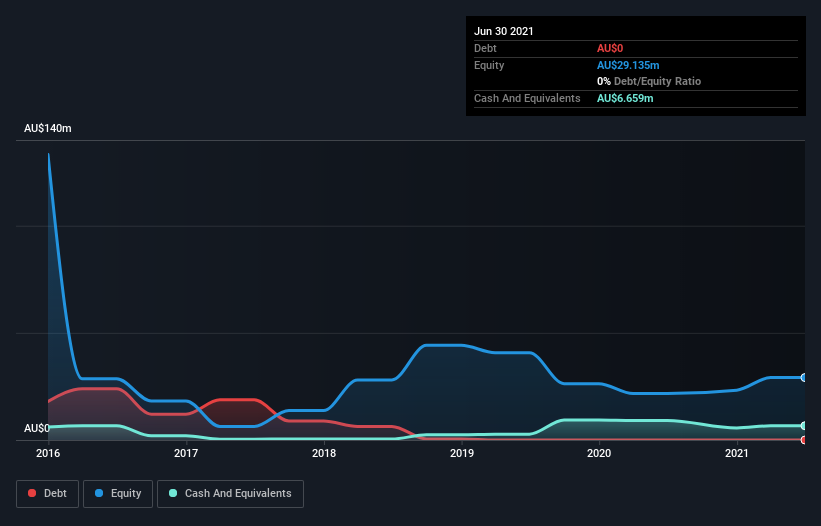Can Hillgrove Resources (ASX:HGO) Afford To Invest In Growth?
Even when a business is losing money, it's possible for shareholders to make money if they buy a good business at the right price. For example, although software-as-a-service business Salesforce.com lost money for years while it grew recurring revenue, if you held shares since 2005, you'd have done very well indeed. Having said that, unprofitable companies are risky because they could potentially burn through all their cash and become distressed.
So should Hillgrove Resources (ASX:HGO) shareholders be worried about its cash burn? For the purposes of this article, cash burn is the annual rate at which an unprofitable company spends cash to fund its growth; its negative free cash flow. First, we'll determine its cash runway by comparing its cash burn with its cash reserves.
See our latest analysis for Hillgrove Resources
When Might Hillgrove Resources Run Out Of Money?
A company's cash runway is calculated by dividing its cash hoard by its cash burn. As at June 2021, Hillgrove Resources had cash of AU$6.7m and no debt. In the last year, its cash burn was AU$13m. So it had a cash runway of approximately 6 months from June 2021. To be frank, this kind of short runway puts us on edge, as it indicates the company must reduce its cash burn significantly, or else raise cash imminently. Depicted below, you can see how its cash holdings have changed over time.
How Hard Would It Be For Hillgrove Resources To Raise More Cash For Growth?
Companies can raise capital through either debt or equity. One of the main advantages held by publicly listed companies is that they can sell shares to investors to raise cash and fund growth. By comparing a company's annual cash burn to its total market capitalisation, we can estimate roughly how many shares it would have to issue in order to run the company for another year (at the same burn rate).
Hillgrove Resources' cash burn of AU$13m is about 20% of its AU$66m market capitalisation. Given that situation, it's fair to say the company wouldn't have much trouble raising more cash for growth, but shareholders would be somewhat diluted.
Is Hillgrove Resources' Cash Burn A Worry?
Because Hillgrove Resources is an early stage company, we don't have a great deal of data on which to form an opinion of its cash burn. Having said that, we can say that its cash runway was a real negative. Therefore, in our view, the company has somewhat problematic cash burn rates, and it may face the need for more funding in the future. On another note, we conducted an in-depth investigation of the company, and identified 4 warning signs for Hillgrove Resources (3 make us uncomfortable!) that you should be aware of before investing here.
Of course Hillgrove Resources may not be the best stock to buy. So you may wish to see this free collection of companies boasting high return on equity, or this list of stocks that insiders are buying.
Have feedback on this article? Concerned about the content? Get in touch with us directly. Alternatively, email editorial-team (at) simplywallst.com.
This article by Simply Wall St is general in nature. We provide commentary based on historical data and analyst forecasts only using an unbiased methodology and our articles are not intended to be financial advice. It does not constitute a recommendation to buy or sell any stock, and does not take account of your objectives, or your financial situation. We aim to bring you long-term focused analysis driven by fundamental data. Note that our analysis may not factor in the latest price-sensitive company announcements or qualitative material. Simply Wall St has no position in any stocks mentioned.

 Yahoo Finance
Yahoo Finance 
